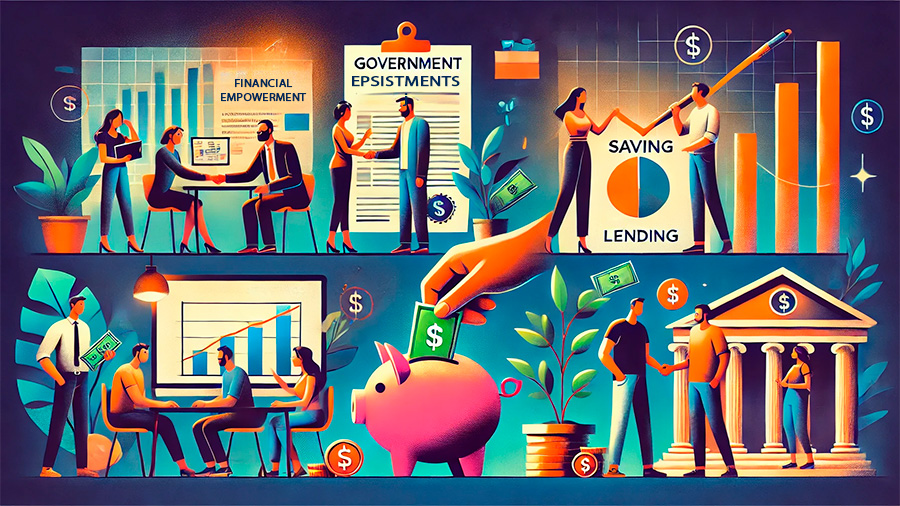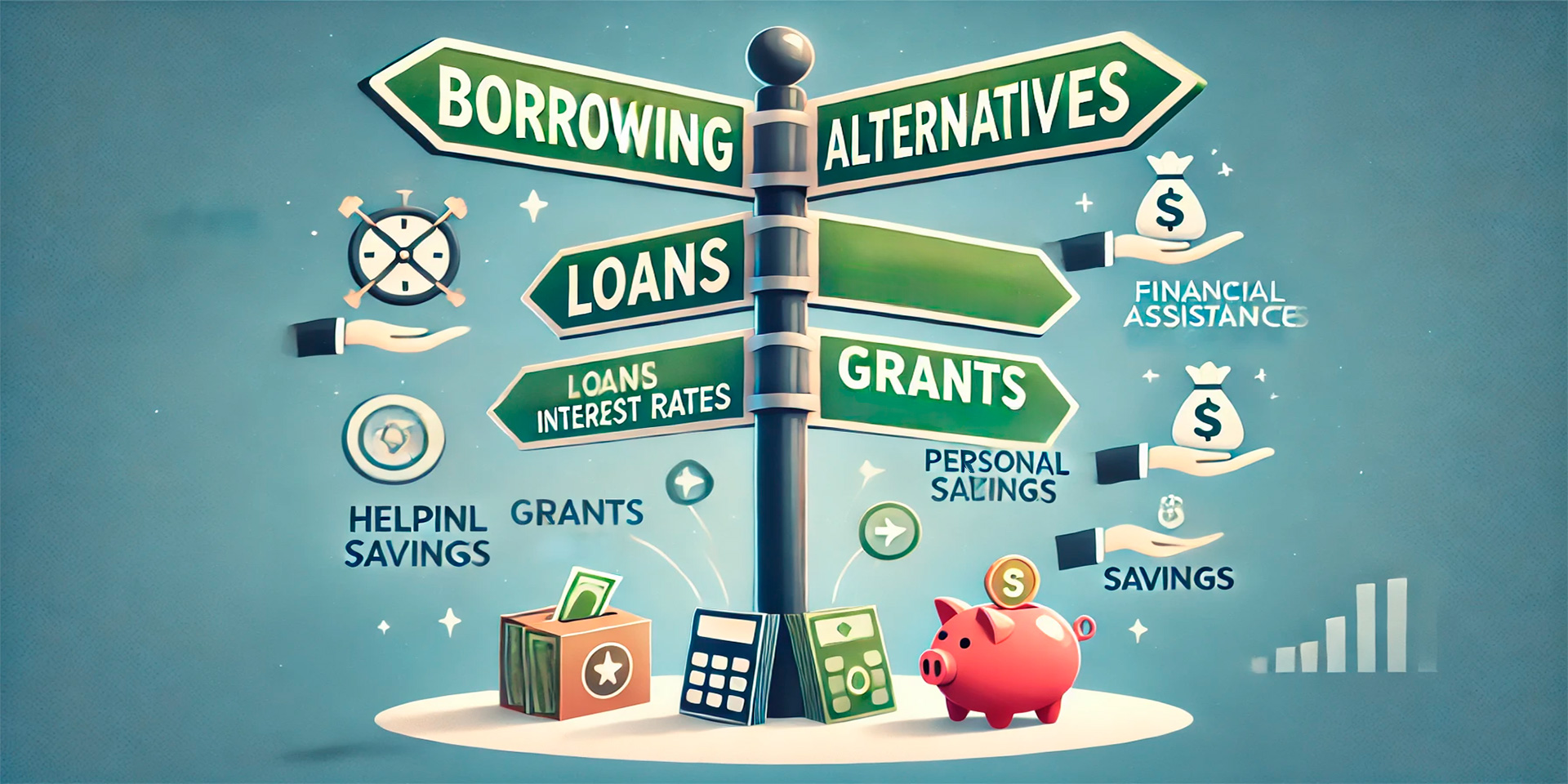Loans are a common solution to financial needs, but they are not always the best option. While loans can provide immediate funds for emergencies, large purchases, or investments, they come with the obligation to repay, often with interest. This can lead to long-term financial strain if not managed properly. In certain situations, avoiding borrowing and exploring alternatives can be a more beneficial strategy. This article will explore viable alternatives to taking out loans, such as financial assistance programs, grants, and personal savings, and explain when it’s best to avoid borrowing altogether.
Understanding the Costs of Borrowing
Before diving into alternatives, it’s important to understand the true costs of borrowing. Loans typically involve interest charges, fees, and repayment schedules that can stretch over several years. If you’re unable to make timely payments, the costs can rise significantly due to late fees, penalties, and accruing interest. While loans can be useful for meeting immediate financial needs, the long-term burden of debt can impact your financial freedom and credit score.
1. The Hidden Costs of Loans
Loans can seem like a straightforward solution, but they come with hidden costs that can add up over time. It’s important to factor in both the interest rate and the fees associated with borrowing.
Hidden costs of borrowing:
- Interest rates: The primary cost of a loan is the interest, which can vary depending on the type of loan and the borrower’s creditworthiness. High-interest loans, such as payday loans or credit cards, can become a significant financial burden.
- Fees: Loans may come with origination fees, processing fees, and late payment penalties. These fees can increase the total cost of the loan beyond the initial amount borrowed.
- Debt accumulation: Borrowing can lead to accumulating debt, especially if multiple loans are taken out or if the repayment period is extended. This can affect your financial flexibility and increase financial stress.

When to Avoid Borrowing and Seek Alternatives
While loans may seem like the easiest option in times of financial need, there are many situations where borrowing may not be the best choice. In these cases, alternatives such as grants, financial assistance programs, and personal savings can help you meet your needs without incurring debt.
1. Financial Assistance Programs and Grants
Many governments, nonprofit organizations, and private entities offer financial assistance programs and grants to individuals facing economic hardships or pursuing educational or business opportunities. Grants, in particular, are valuable because they don’t need to be repaid, unlike loans.
Examples of financial assistance programs and grants:
- Government grants: These are available for a wide range of purposes, including education, small business development, housing assistance, and health care. Grants are typically need-based and do not require repayment.
- Nonprofit organization grants: Many nonprofits offer grants to individuals or families in need, especially for health-related expenses, disaster relief, or community development projects.
- Educational grants: If you’re pursuing higher education, federal and state government programs offer grants that can cover a portion of tuition costs without the need for repayment.
2. Building Personal Savings
One of the best alternatives to borrowing is building personal savings. While it requires discipline and time, having a savings buffer can prevent you from needing to take out loans during emergencies or for planned expenses. Having enough saved up allows you to cover unexpected costs without incurring debt.
How to build personal savings effectively:
- Start with small, consistent contributions: Even if you can only save a small amount each month, consistently setting aside money will build up over time.
- Emergency fund: Set up an emergency fund that covers 3-6 months of living expenses. This can help you handle unexpected situations such as medical bills or job loss without the need for loans.
- Automatic savings: Set up automatic transfers to a savings account to ensure you are consistently saving. Treat savings as a regular expense rather than something optional.
3. Peer-to-Peer Lending and Credit Unions
If you find that you need financial assistance but want to avoid the high interest rates and fees associated with traditional loans, peer-to-peer lending platforms and credit unions can be viable alternatives.
Alternative lending options:
- Peer-to-peer lending: This option allows individuals to borrow money directly from other individuals or investors via online platforms. Peer-to-peer lending often comes with lower interest rates compared to traditional loans, and it can be a more flexible solution for borrowers.
- Credit unions: Credit unions offer loans with lower interest rates and fewer fees than banks. Additionally, they are member-focused organizations that prioritize financial well-being over profits, making them an attractive option for borrowers looking for better terms.
4. Refinancing Existing Debts
If you already have existing debt and are considering taking out another loan, it may be worth exploring refinancing options instead. Refinancing involves replacing your current loans with a new loan that offers better terms, such as lower interest rates or a more favorable repayment schedule. This can help reduce monthly payments and overall interest costs.
How refinancing helps:
- Lower interest rates: If you have good credit, you may qualify for a lower interest rate, which can significantly reduce the total cost of the loan.
- Streamlined payments: Refinancing can also help consolidate multiple loans into a single, more manageable payment.
- More favorable terms: You may be able to extend the repayment period, making monthly payments more affordable while maintaining a manageable debt load.

When Should You Avoid Borrowing Altogether?
While loans can be useful in some circumstances, there are times when borrowing should be avoided. Taking on too much debt, especially in uncertain financial conditions, can lead to stress, higher costs, and long-term financial instability.
1. When You Can Afford to Save
If you have the ability to save for an expense rather than borrow, it’s usually best to do so. Whether you’re planning for a big purchase, an emergency, or an investment, saving up for it allows you to avoid debt and interest payments. Saving might take time, but the long-term benefits of financial independence and security are worth the effort.
2. When Borrowing Will Create Financial Stress
If taking on a loan would push your finances beyond your comfort zone or result in debt that’s hard to manage, it may be wise to explore other options. Borrowing should not create financial strain or hinder your ability to meet basic living expenses. In such cases, saving, seeking grants, or considering other financial assistance programs is a better option.
3. When You Have Better Alternative Funding Options
If there are other viable alternatives, such as grants, subsidies, or financial assistance from family, friends, or community organizations, borrowing may not be necessary. These options can provide the financial support you need without the obligations of a loan, helping you avoid debt accumulation.
Conclusion
While loans are a common solution for many financial needs, they are not always the best option, particularly when other alternatives are available. Whether it’s utilizing financial assistance programs, building personal savings, exploring peer-to-peer lending, or refinancing existing debts, there are several ways to manage finances without taking on the burden of a loan. By understanding when borrowing is necessary and when alternatives can provide a better solution, you can make more informed decisions about your financial future and avoid unnecessary debt.




